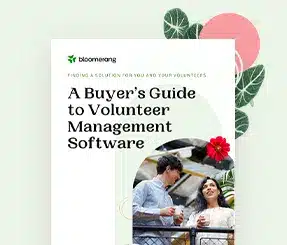MacKenzie Scott Foundation & Grant Explained


Full Platform Overview Chat With Us



Full Platform Overview Chat With Us




It’s no secret that grants are often game-changers for nonprofits. Unlike individual donations, they usually come from established foundations capable of gifting large lump sums—sums that can push an organization into a new phase of growth and impact. However, securing these grants is no easy feat. Finding the right grant foundation for your nonprofit is just the first hurdle as the application process is often complex, time-consuming, and comes with strict spending guidelines.
But what if another solution existed? What if nonprofits could be given funding in a simpler way? Enter MacKenzie Scott and Yield Giving—a billionaire philanthropist and her foundation who together are transforming the grantmaking process.
If you like to keep tabs on the ultra-rich, MacKenzie Scott is a name you’ve likely heard. She first gained public attention as the ex-wife of Amazon founder Jeff Bezos, and, more notably, the $38 billion she received following their divorce. A sum of money that skyrocketed her to the top spot on the list of wealthiest women in the world—a list she still ranks in the top five of. Since then, she’s made quite the name for herself in the nonprofit sector. Given that she’s donated over $19 billion to 2,000 organizations since 2019, it’s safe to say she’s earned the recognition.
In 2022, following criticism over the secrecy of her donations, MacKenzie Scott founded Yield Giving with the aim of providing transparency to the causes and organizations she supports. From the beginning, Yield Giving took an untraditional approach to grantmaking by providing unrestricted funding to nonprofits, allowing them to use the money as they see fit. Fortunately for nonprofits, there is now an application process for grant consideration!
Naturally, you might be wondering, how then does Yield Giving decide who receives a grant? It’s a question you’re not alone in.

If you take a perusal of Yield Giving’s website, you’ll notice how bare bones it is—especially when it comes to information about their process. “Shrouded in secrecy” could honestly be the motto for this foundation. However, we do know they rely on two models for their grant selection.
The first, and most common, is their Quiet Research approach. As the name suggests, this process and all that it entails is kept close to the chest. What we know about it largely comes from past recipients: A nonprofit leader will get an unexpected call from Yield Giving, have a discussion or two, and then a generous sum of money will be dropped into their account. After that, two things are stated—use the money however your organization sees fit, and don’t come back asking for more. While this approach certainly limits the burden on nonprofits that are chosen by nixing the application process, it also restricts accessibility for those that may not be on MacKenzie Scott’s radar.
Given that fact, in 2023 Yield Giving announced their first Open Call in partnership with Lever for Change. According to Lever for Change, the inaugural round focused on “community-led, community-focused organizations whose explicit purpose is to advance the voices and opportunities of individuals and families of meager or modest means, and groups who have met with discrimination and other systemic obstacles.” Unlike the Quiet Research model, the Open Call included an approximately 10 hour long application process, lengthy peer evaluation, and a nine month long selection process.
Despite this intense undertaking, participants claimed they appreciated the transparency through the multiple rounds of review. And the effort paid off—big time. In 2024, Yield Giving awarded a total of $640 million to 361 organizations, which, when broken down, equated to 279 organizations receiving $2 million each and 82 organizations receiving $1 million each. In true Yield Giving fashion, this came as quite the surprise as the original goal was to award 250 organizations with $1 million each.
With such a clear penchant for extreme charity, you probably have a few questions on how your nonprofit can be considered for Yield Giving Funding.
As already stated, when it comes to Quiet Research, Yield Giving keeps their selection process very tight-lipped, but we can glean a few things from their website. To be considered for a grant a nonprofit must have a multi-year track record, stable finances, and measurable outcomes. They also prioritize organizations working to uplift people in underserved communities—a broad statement, yes, but one that does inspire a bit of direction.
In contrast, the Open Call had clearly defined criteria. Organizations were only eligible if they had an annual operating budget between $1-$5 million for at least two of the last four fiscal years, were community-led and focused, and had a proven track-record of successfully utilizing previous funding.
This is where it’s important to pay attention to trends, and be sure to check in on Yield Giving’s website, as MacKenzie Scott likes to award her grants in thematic batches.
In 2023, the focus was all on direct service providers. Affordable housing, job training, and health-based organizations were the standouts. Whereas in 2024, the results of the Open Call showcase a clear preference for organizations geared toward systemic change.
By this point it will come as no surprise that this is not a fully transparent answer. While many recipients are known, a large pool of the funding Yield Giving has gifted is left undisclosed. This is due to Yield Giving’s belief in trusting nonprofits to decide on how and when they want to announce their funding. However, once a grant is made public, the information is detailed on Yield Giving’s website on their “Gifts” page and summarized in MacKenzie’s Scott’s essays.
Yield Giving states that their Open Call process is ongoing, however no news has been announced as of yet. It’s in your best interest to keep a close eye on their website, as news of another Open Call will likely be dropped without preamble.

MacKenzie Scott and Yield Giving are disrupting the traditional grantmaking process. While secretive, their Quiet Research removes the usual hurdles of lengthy applications, strict spending guidelines, and rigorous reporting requirements. Meanwhile, while intensive, their Open Call creates a pathway for greater accessibility and broader impact. However you slice it, it’s clear MacKenzie Scott truly cares about nonprofits and the work they do.
And while not the most transparent of foundations, Yield Giving seems to have three key takeaways for nonprofit organizations—remain mission-driven, maintain financial stability, and demonstrate measurable impact. Do that, and you may just be the surprise recipient of a life-changing grant.
Comments
Hani Mussad
Kristen Hay
Nancylynn Ward, PhD
Kristen Hay
Alex Moreno
Lori Astwood
al brown
ROBERT MWANGALA MUWELA
Rose Chivens
Kay Hegge
John
Cyrus Williams
Linda Cerra
Vatricia A McKinney
Meliha Avdic
Maureen Diederich
Carlotta Blount
Cynthia Haymon
Nancy Torrison
L. Ernestine Fields, Esq.
Andrea H
Pamela Van Cortlandt
Jessica Detor
Christine Pharr
How Mackenzie Scott Managed Her Money... | Qrius
Shoshana Reuben
Vincent D.Stravino